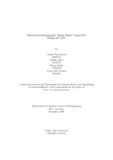| dc.contributor.advisor | Parvez, Mohammad Zavid | |
| dc.contributor.advisor | Rahman, Rafeed | |
| dc.contributor.author | Chakraborty, Pritam | |
| dc.contributor.author | Akter, Sanjida | |
| dc.contributor.author | Hasin, Bariyat | |
| dc.contributor.author | Ahmed, Syeda Faria | |
| dc.date.accessioned | 2022-05-11T04:03:39Z | |
| dc.date.available | 2022-05-11T04:03:39Z | |
| dc.date.copyright | 2021 | |
| dc.date.issued | 2021-09 | |
| dc.identifier.other | ID 18101357 | |
| dc.identifier.other | ID 18101215 | |
| dc.identifier.other | ID 17101300 | |
| dc.identifier.other | ID 18101161 | |
| dc.identifier.uri | http://hdl.handle.net/10361/16587 | |
| dc.description | This thesis is submitted in partial fulfillment of the requirements for the degree of Bachelor of Science in Computer Science and Engineering, 2021. | en_US |
| dc.description | Cataloged from PDF version of thesis. | |
| dc.description | Includes bibliographical references (pages 40-42). | |
| dc.description.abstract | The complexities and challenges of performing daily fundamental activities like getting
dressed, answering a phone call, opening and closing the door, writing something
down, or even consuming foods for patients who have lost their functionality of hands
and arms due to neurological disability or amputations, is something anyone could
never imagine. Our research paper serves to show the importance of restoring patients’
ability to do daily activities to increase their mobility and standard of living.
In this paper, we have proposed an innovative, resilient and dynamic implementation
of a grasp and lift technology that would accumulate brain signals in the form of
waves to operate prosthetic limbs without the help of an external device and wires.
We have decided to use Electroencephalography to reactivate the neuromuscular
bypass with the help of an EEG device for obtaining brain signals that correspond
to specific circumstances from the scalp surface area. We also have established models
using Neural Networks that would monitor multimodal sensory activities which
include object encounter, grasp, lift-off, replacement from the dataset and assist the
users of this technology to operate the prostheses only by incorporating their brain
signals. The artistry of the whole procedure incorporates substantial segments like
signal acquisition and pre-processing of the signals into data, feature extraction,
denoising etc. which later leads us to implement CNN and LSTM models. After
implementing the models we obtained the accuracy of 90.11% and 74.44% from the
CNN and LSTM model respectively. Throughout the implementation, there will
be a differential boost in the accuracy level for each of the models. Therefore, our
paper is an evidence of how EEG is considered to be a communication channel between
prosthetic devices and the human brain. Furthermore, it intricately reveals
the approach of grasp and lift technology through signal acquisition, processing, and
implementation based on Electroencephalography. | en_US |
| dc.description.statementofresponsibility | Pritam Chakraborty | |
| dc.description.statementofresponsibility | Sanjida Akter | |
| dc.description.statementofresponsibility | Bariyat Hasin | |
| dc.description.statementofresponsibility | Syeda Faria Ahmed | |
| dc.format.extent | 42 pages | |
| dc.language.iso | en | en_US |
| dc.publisher | Brac University | en_US |
| dc.rights | Brac University theses are protected by copyright. They may be viewed from this source for any purpose, but reproduction or distribution in any format is prohibited without written permission. | |
| dc.subject | BCI | en_US |
| dc.subject | Electroencephalography | en_US |
| dc.subject | Brain wave | en_US |
| dc.subject | Memory cell | en_US |
| dc.subject | Signal processing | en_US |
| dc.subject.lcsh | Neurosciences | |
| dc.subject.lcsh | Signal processing -- Digital techniques -- Computer programs. | |
| dc.title | Electroencephalography based brain controlled grasp and lift | en_US |
| dc.type | Thesis | en_US |
| dc.contributor.department | Department of Computer Science and Engineering, Brac University | |
| dc.description.degree | B. Computer Science | |

